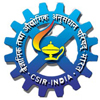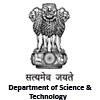- Singh, V. S., Dubey, A. P., Gupta, A., Singh1,S., Singh, B. N. and Tripathi, A. K. (2017) Regulation of a glycerol induced quinoprotein alcohol dehydrogenase by σ54 and a LuxR-type regulator in Azospirillum brasilense Sp7 Journal of Bacteriology (ASM)doi:10.1128/JB.00035-17
- Srivastava, A., Brilisauer, K., Rai, A. K., Ballal, A., Forchhammer, K. and Tripathi, A. K. (2016) Downregulation of the alternative sigma factor SigJ confers a photoprotective phenotype to Anabaena PCC 7120. Plant and Cell Physiology (JSPP) 58:287-297
- Singh, S., Dwivedi, S., Singh, V.S., and Tripathi A.K. (2016) Expression of alkylhydroperoxide reductase is regulated negatively by OxyR1 and positively by RpoE2 sigma factor in Azospirillum brasilense Sp7. Microbiology (SGM) 162:1870-1883
- Rai, A.K., Dubey, A.P.,Kumar, S., Mishra, M. N., Dutta, D., Singh, B.N. and Tripathi, A. K. (2016) Carotenoid biosynthetic pathways are regulated by a network of multiple cascades of alternative sigma factors in Azospirillum brasilense Sp7. Journal of Bacteriology 198:2955-2964
- Singh, D. N, Gupta, A., Singh, V.S., Mishra, R., Kateriya, S., Tripathi, A. K. (2015) Identification and characterization of a novel phosphodiesterase from the metagenome of an Indian coalbed. PLoS ONE 10(2): e0118075. doi:10.1371/journal.pone.0118075
- Rastogi, S., Kalra, A., Gupta, V., Khan, F., Lal, R. K., Tripathi, A. K., Parameswaran, S., Gopalakrishnan. C., Ramaswamy, G., Shasany, A. K. (2015) Unravelling the genome of Holy basil: an "incomparable" "elixir of life" of traditional Indian medicine. BMC Genomics. 16:413. doi: 10.1186/s12864-015-1640-z.
- Singh, S., Singh, C. and Tripathi, A. K. (2014) A SAM-dependent methyltransferase cotranscribed with arsenate reductase alters resistance to peptidyl transferase center-binding antibiotics in Azospirillum brasilense Sp7. Applied Microbiology & Biotechnology98: 4625-4636
- Gupta, N., Gupta,A., Kumar,S., Mishra,R., Singh, C. and Tripathi, A. K. (2014) Cross-talk between cognate and non-cognate RpoE sigma factors and Zn2+-binding anti-sigma factors regulates photooxidative stress response in Azospirillum brasilense Anti-oxidants and Redox Signalling 20:42-59
- Gehlot, H.S., Tak, N., Kaushik, M., Mitra, S., Chen, W-B, Poweleit, N., Panwar, D., Poonar, N., Parihar, R., Tak, A., Sankhla, I.S., Ojha, A., Rama Rao, S., Simon, M.F., Reis Junior, F.B.D., Perigolo, N., Tripathi, A.K., Sprent, J.I., Young, J.P.W., James, E.K. and Gyaneshwar, P. (2013) An invasive Mimosa in India does not adopt the symbionts of its native relatives. Annals of Botany 112: 179-196
- Singh, D. N. and Tripathi, A. K (2013) Coal induced production of a rhamnolipid biosurfactant by Pseudomonas stutzeri, isolated from the formation water of Jharia coalbed. Bioresource Technology 128:215-221
- Gupta,N., Kumar, S., Mishra, M. N. and Tripathi, A. K. (2013) A constitutively expressed pair of rpoE2-chrR2 in Azospirillum brasilense Sp7 is required for survival under antibiotic and oxidative stress. Microbiology (SGM)159:205-218
- Kumar, S., Kateriya, S., Singh, V. S., Tanwar, M., Agarwal, M., Singh, H., Khurana, J. P., Amla, D. V. and Tripathi, A. K. (2012) Bacteriophytochrome controls carotenoid-indepedent response to photodynamic stress in a non-photosynthetic rhizobacterium, Azospirillum brasilense Sp7. Scientific Reports (Nature Publishing Group) 2, DOI:doi:10.1038/srep00872
- Kumar, S., Rai, A. K., Mishra, M.N., Shukla, M., Singh, P. K. and Tripathi, A. K. (2012) RpoH2 sigma factor controls the photooxidative stress response in a non-photosynthetic rhizobacterium, Azospirillum brasilense Sp7. Microbiology (SGM) 158:2891-2902
- Singh, D. N., Kumar, A., Sarbhai, M. P. and Tripathi, A. K (2012) Cultivation independent analysis of archaeal and bacterial communities of the formation water in an Indian coal bed to enhance biotransformation of coal into methane. Applied Microbiology & Biotechnology 93:1337–1350
- Singh, D. N. and Tripathi, A. K. (2011) Evaluation of the coal-degrading ability of Rhizobium and Chelatococcus strains isolated from the formation of an Indian coal bed. Journal of Microbiology & Biotechnology 21:1101-1108
- Mishra, M. N., Kumar, S., Gupta, N., Kaur, S., Gupta, A. and Tripathi, A. K. (2011) The extra-cytoplasmic function sigma factor (RpoE) cotranscribed with its cognate anti-sigma factor confers tolerance to NaCl, ethanol and methylene blue in Azospirillum brasilense Sp7. Microbiology (SGM) 157: 988 - 999
- Kaur, S, Mishra M.N. and Tripathi, A. K. (2010)Gene encoding γ-carbonic anhydrase is cotranscribed with argC and induced in response to stationary phase and high CO2 in Azospirillum brasilense Sp7. BMC Microbiology 10:184
- Ghosh M, Ganguli A, Tripathi AK. (2009) Decolorization of anaerobically digested molasses spent wash by Pseudomonas putida. Applied Biochemistry & Microbiology 45:78-83
- Kaur, S, Mishra M.N. and Tripathi, A. K. (2009) Regulation of expression and biochemical characterization of a -class carbonic anhydrase from the plant growth-promoting rhizobacterium, Azospirillum brasilense Sp7. FEMS Microbiology Letters 299:149-158
- Shukla, A. K., Vishwakarma, P., Upadhyay, S. N., Tripathi, A. K., Prasana, H. C. and Dubey, S. K. (2009) Biodegradation of trichloroethylene (TCE) by methanotrophic community. Bioresource Technology 100: 2469-2474
- Rishiram R., Krishnamurthi K., Saravana Devi S., Mudliar, S., Kaur, S., Tripathi, A. K. and Chakrabarti, T. (2009) Bio-sequestration of carbon dioxide using carbonic anhydrase enzyme purified from Citrobacter freundii World Journal of Microbiology & Biotechnology 25:981-987
- Paul Chowdhury, S., Schmid, S., Hartmann, A. and Tripathi, A.K. (2009) Diversity of 16S-rRNA and nifH genes derived from rhizosphere soil and roots of an endemic drought tolerant grass, Lasiurus sindicus. European Journal of Soil Biology 45:114-122
- Nagarajan, T., Mishra, M. N., Spaepen, S., Vanderleyden, J., Gross, C.A. and Tripathi, A.K. (2008) An extra cytoplasmic function sigma factor and anti-sigma factor control carotenoid biosynthesis in Azospirillum brasilense. Microbiology 154: 2096-2105
- Mishra, M. N., Nagarajan, T., Sharma, I.M., Jagannadham, M. V. and Tripathi, A.K. (2008) Mutation in a gene encoding anti-sigma factor in Azospirillum brasilense confers tolerance to elevated temperature, anti-bacterial peptide and PEG-200 via carotenoid synthesis. FEMS Microbiology Letters, 287:221-229.
- Paul Chowdhury, S., Schmid, S., Hartmann, A. and Tripathi, A.K. (2007) Identification of diazotrophs in the culturable bacterial community associated with roots of Lasiurus sindicus, a perennial grass of Thar Desert, India. Microbial Ecology 54: 82-90
- Paul Chowdhury, S., Nagarajan, T., Tripathi, Rachna., Mishra, Muktinath., Le Rudulier, D. and Tripathi, A. K. (2007) Strain specific salt tolerance and osmoregulatory mechanisms in Azospirillum brasilense. FEMS Microbiology Letters 267:72-79
- Nagarajan, T., Vanderleyden, J. and Tripathi, A.K. (2007) Identification of salt stress inducible genes that control cell envelope related functions in Azospirillum brasilense Sp7. Molecular Genetics & Genomics 278: 43-51
- Alahari, A., Tripathi, A.K. and Le Rudulier, D. (2006) Cloning and characterization of a fur homolog from Azospirillum brasilense Sp7. Current Microbiology 52:123-127
- Tripathi, A.K., Verma, S. C., Chowdhury, S.P., Lebuhn, M., Gattinger, A. and Schloter, M. (2006) Ochrobactrum oryzae sp. nov., a novel endophytic bacterial species isolated from deep-water rice in India, International Journal of Systematic & Evolutionary Microbiology 56:1677-1680
- Srivastava, A. and Tripathi A. K. (2006) ADP ribosylation of dinitrogenase reductase and adenylylation of glutamine synthetase control ammonia excretion in ethylene diamine resistant mutants of Azospirillum brasilense Sp7. Current Microbiology 53:317-323
- Dubey, S.K., Tripathi, A.K. and Upadhyay, S.N. (2006) Exploration of soil bacterial communities for exploring their potential as bioresource. Bioresource Technology 97:2217-2224
- Tilak, K.V.B.R., Ranganayaki, N., Pal, K.K., De, R., Saxena, A.K., Shekhar Nautiyal, C., Mittal, S., Tripathi, A.K., Johri, B.N. (2005) Diversity of plant growth and soil health supporting bacteria. Current Science 89:136-150
- Johri, B.N., Ganguly, B.N., Goel, S.K., Virdi, J.S., Tripathi, A.K., Jain, R.K., Kamra, D.N, and Bhatnagar, A. (2005) Microorganism diversity: Strategy and action plan. Current Science 89: 151-154
- Verma, S.C., Paulchowdhury, S. and Tripathi, A.K. (2004) Phylogeny based on 16S rDNA and nifH sequences of Ralstonia taiwanensis strains isolated from nitrogen fixing nodules of Mimosa pudica in India. Canadian Journal of Microbiology 50:312-322
- Verma, S.C., Singh, A., PaulChowdhury, S. and Tripathi, A.K. (2004) Endophytic colonization ability of two deep water rice endophytes, Pantoea agglomerans and Ochrobactrum sp using GFP reporter. Biotechnology Letters 26:425-429
- Ghosh, M., Verma, S.C., Mengoni. A. and Tripathi, A.K. (2004) Enrichment and identification of bacteria capable of reducing chemical oxygen demand of anaerobically treated molasses spent wash. Journal of Applied Microbiology 96:1278-1286
- Paul Chowdhury, S., Khanna, S., Verma, S.C. and Tripathi, A.K. (2004) Molecular diversity of tannic acid degrading bacteria isolated from tannery soil. Journal of Applied Microbiology 97: 1210-1219
- Tripathi, A. K. (2002) Rhizobia of the b-subclass of proteobacteria: A tale of losing the race. Current Science 82: 8-9.
- Ghosh, M., Ganguli, A. and Tripathi, A. K. (2002) Treatment of anaerobically digested distillery spentwash by a two stage bioreactor using Pseudomonas putida and Aeromonas sp. Process Biochemistry 37: 857-862
- Ganguli, A. and Tripathi, A. K. (2002) Bioremediation of toxic chromium from electroplating effluent by chromate reducing Pseudomonas aeruginosa A2chr in two bioreactors. Applied Microbiology and Biotechnology 58: 416-420
- Tripathi, A. K., Nagarajan, T., Verma, S. C. and Le Rudulier, D. (2002) Inhibition of biosynthesis and activity of nitrogenase in Azospirillum brasilense Sp7 under salinity stress. Current Microbiology 44:363-367
- Tripathi, A. K., Verma, S. C., Ron, E. Z. and Tripathi, P. (2002) Molecular characterization of a salt-tolerant bacterial community in the rice rhizosphere Research in Microbiology 153:579-584
- Ganguli, A. and Tripathi, A. K. (2001) Inducible periplasmic chromate reducing activity in Pseudomonas aeruginosa. Journal of Microbiology & Biotechnology 11:355-361
- Verma, S. C., Ladha, J. K. and Tripathi, A. K. (2001) Evaluation of plant growth promoting and colonization ability of endophytic diazotrophs from deep water rice. Journal of Biotechnology 91: 127-141
- Tikoo, A., Verma, S.C., Tripathi, A. K. and Nath, G. (2001) PCR fingerprinting of some Indian isolates of Salmonella typhi. Current Science 80: 1049-1052
- Khare, S. and Tripathi, A. K. (2001) Reduced accumulation of chromium confers chromate tolerance in Pseudomonas aeruginosa isolated from tannery effluent. Indian Journal of Microbiology. 41: 303-305
- Nath, G. Tikoo, A., Manocha, S., Tripathi, A. K. and Gulati, A. K. (2000) Drug resistance in Salmonella typhi in North India with special reference to ciprofloxacin. Journal of Antimicrobial Chemotherapy. 46: 149-150
- Ganguli, A. and Tripathi, A. K. (1999) Survival and Chromate reducing ability of Pseudomonas aeruginosa in tannery effluent. Letters in Applied Microbiology 28: 76-80.
- Tripathi, A. K. and Mishra B.M. (1998) Identification and cloning of a Azospirillum lipoferum locus that complements Escherichia coli proU mutant. FEMS Microbiology Letters.162:241-247
- Tripathi, A. K., Ganguli, A, Tripathi, R. and Bazzicalupo, M. (1998) Duplication of IS50 and its elimination by homologous recombination in Azospirillum brasilense. Canadian Journal of Microbiology.44:1110-1113
- Tripathi, A. K., Mishra, B. M. and Tripathi, P. (1998) Salinity stress responses in the plant growth promoting rhizobacteria, Azospirillum spp. Journal of Biosciences 23: 463-471.
- Khare, S., Ganguli, A. and Tripathi, A. K. (1997) Responses of Pseudomonas aeruginosa to chromium stress. European Journal of Soil Biology 33:153-158
- Tripathi, A. K. and Mishra, B. M. (1996) Isolation and characterization of Azospirillum lipoferum locus that complements dctA mutant of Rhizobium meliloti. Canadian Journal of Microbiology 42: 503-506.
- Tripathi, A. K. (1995) Cloning wild-type chromosomal genes using transposon mutagenized DNA in Gram Negative bacteria. Trends in Genetics. 11:340.
- Chatterjee, S., Asthana, R. K., Tripathi, A. K. and Singh, S. P. (1995) Metal removal by selected sorbents. Process Biochemistry 31; 457-462. Tripathi, A. K. (1995) Genomic characterization of Azospirillum halopraeferens. Indian Journal of Experimental Biology, 33: 249-252.
- Tripathi A. K., (1993) Evidence for the existence of fixJ and fixK - like genes in Azospirillum brasilense. Indian Journal of Experimental Biology 31: 559-561.
- Tripathi, A. K. and Klingmueller, W. (1992) Temperature sensitivity of nitrogen fixation in Azospirillum spp. Canadian Journal of Microbiology 38: 1238-1241.
- Tripathi, A. K. and Kumar, H. D. (1991) The organization and regulation of nif genes in non- symbiotic nitrogen fixing bacteria. Journal of Scientific Research, BHU, 41A; 1-20.
- Singh, D.V., Tripathi, A. K. and Kumar, H. D. (1991) Isolation and characterization of salinity resistant mutant of a nitrogen fixing cynobacterium, Anabaena doliolum. Journal of Applied Bacteriology 71: 207-210.
- Tripathi, A. K., Kreutzer, R. and Klingmueller, W. (1991) Identification of a promoter dependent on nifA and s 54 upstream of nifH in Azospirillum lipoferum. Molecular and General Genetics, 227: 86-90.
- Singh, M., Tripathi, A. K. and Klingmueller, W. (1989) Identification of a regulatory nifA type gene and physical mapping of cloned new nif regions of Azospirillum brasilense. Molecular and General Genetics, 219: 235-240.
- Tripathi, A. K., Singh, D.V. and Kumar, H.D. (1987) Isolation of mutants of Nostoc linckia resistant to DL-5-fluorotryptophan. Microbios Letter 36: 121-127.
- Tripathi, A. K. and Kumar, H. D. (1986) Mutagenesis by ethidium bromide, proflavine and mitomycin C in cyanobacterium Nostoc sp. Mutation Research 174: 175-178. (IF: 4.159)
- Singh, D.V., Tripathi, A. K. and Kumar H.D. (1986) Is tryptophan a repressor of heterocyst differentiation and nitrogenase activity in the cynobacterium Anabaena doliolum Annales des Sciences Naturelles Botanique 8: 29-33.
- Tripathi, A. K. and Kumar, H. D. (1985) Transformation in the cyanobacterium Nostoc. Biologisches Zentralblatt. 104: 239-243.
- Kumar, H. D. and Tripathi, A. K. (1985) Isolation of a hydroxyproline secreting pigment mutant of Nostoc.sp. by metronidazole selection. MIRCEN Journal of Applied Microbiology & Biotechnology 1:269-275.
- Kumar, H. D. and Tripathi, A. K. (1985) Mutagenic and plasmid eliminating action of acridine orange in the cyanobacterium Nostoc. Current Science. 54: 845-852.
- Kumar, H. D., Mishra, D. K. and Tripathi, A. K. (1983) Isolation and characterization of a propionate resistant mutant of the cyanobacterium Nostoc linckia. Plant & Nature. 1:1-9
|
- Kaur, S., Bhattacharya, A., Sharma, A. and Tripathi, A. K. (2011)Diversity of microbial carbonic anhydrases, their physiological role and applications. Microorganisms in Environmental Management and Biotechnology (Eds. T. Satyanarayana, B. N. Johri, & A. Prakash) Springer International
- Tripathi, A.K., PaulChowdhury, S. and Parashar, V. (2007) Biological Nitrogen Fixation: From Fundamentals to Field consideration (Eds. Y. P. Abrol, N. Raghuram & M. S. Sachdev) Tripathi, A. K. (2004) Production, formulation, application and quality control of biofertilizers. In Concise Encyclopedia of Bioresource Technology (ed.) A. Pandey. Haworth Press, USA 483-493
- Tripathi, A. K. and Singh, B. D. (2004) Assessment and reduction of risks associated with genetically engineered microorganisms. Recent Advances in Biotechnology (Ed. M.P. Singh and N. C. Gautam) Shree Publishers & Distributors, Delhi, 147-162
- Barraquio, W. L. Segubre, E. M., Gonzalez, M. S., Verma, S. C., James, E. K., Ladha, J. K. and Tripathi, A. K. (2000) Diazotrophic enterobacteria: What is their role in the rhizosphere? In (Eds. J. K. Ladha and P. M. Reddy) The Quest for Nitrogen Fixation in Rice. IRRI, Manila pp. 93-118.
- Verma, S. C., Ladha, J. K. and Tripathi, A. K. (2000) Diversity of endophytic diazotrophs and mechanism of endophytic colonization in deep water rice. In (Eds. F. O. Pedrosa, M. Hungria, M.G. Yates and W. E. Newton) Nitrogen Fixation: From molecules to crop productivity. Kluwer Acad. Publish. pp. 419-420.
- Tripathi, A. K. and Mishra, B. M. (1998) Responses of Azospirillum brasilense cd to sodium chloride stress. In Nitrogen Fixation with Non-Legumes (eds. Malik, K.A., Mirza, S.A. and Ladha, J.K.) Kluwer Acad. Publ. pp 179-185
- Tripathi, A. K., Mishra, B. M. and Schloter, M. (1995) Role of choline and glycine betaine in Azospirillum brasilense Cd under salinity stress. In Fendrik, I., Del Gallo, M. and Vanderleyden, J. (eds) NATO-ASI Series, Vol.G37, Azospirillum IV and Related Microorganisms pp 383-391.
- Tripathi, A. K. (1995) Regulation of the expression of nitrogen fixation genes in Azospirillum brasilense. In B. Sharma et.al. (eds) Genetic Research and Education: Current Trends and the Next Fifty Years. Ind. Soc. Plant Breed. & Genetics, New Delhi.
- Tripathi, A. K., Khare S. and Ganguli, A. (1994) Isolation and characterization of Pseudomonas strains for detoxifying chromium in the tannery effluent. Symposium - cum - Workshop on Environmental Biotechnology, NEERI, Nagpur pp. 149-157.
- Tripathi, A. K., Singh, M. and Klingmueller, W. (1991) Regulation of nitrogen fixation genes in Azospirillum: Characterization of a nif regulatory region. In Polsinelli, M., Materassi, R. and Vincenzini, M. (eds) Nitrogen Fixation: Proceedings 5th Intl. Symp. Nitrogen Fixation with Non-legumes. Kluwer Acad. Publ., pp. 139-145.
- Tripathi, A. K., Kreutzer, R. and Klingmueller, W. (1989) Engineering thermostability to nitrogen fixation in soil bacteria. Proc. Intl. Congress on "Prospects in Protein Engineering", Groningen, Holland.
- Tripathi, A. K., Singh, D.V and Klingmueller, W. (1988) Regulation of nitrogen fixation in Azospirillum brasilense by the nifA gene of Klebsiella pneumoniae. Proc. Intl. Symp. on "Applied Plant Molecular Biology", Braunschweig, FRG pp. 247-254.
|



